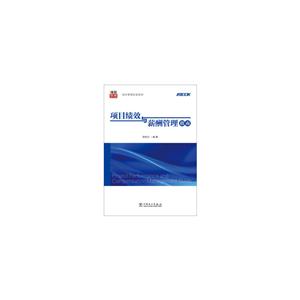Wavelets in Engineering Applications

|
Wavelets in Engineering Applications作者:Luo Gaoyong 开 本:16开 书号ISBN:9787030410092 定价:78.0 出版时间:2014-07-01 出版社:科学出版社 |
Wavelets in Engineering Applications 本书特色
《wavelets in engineering applications》收集了作者所研究的小波理论在信息技术中的工程应用的十多篇论文的系统化合集。书中首先介绍了小波变换的基本原理及在信号处理应用中的特性,并在如下应用领域:系统建模、状态监控、过程控制、振动分析、音频编码、图像质量测量、图像降噪、无线定位、电力线通信等,分章节详细的阐述小波理论及其在相关领域的工程实际应用,对各种小波变换形式的优缺点展开细致的论述,并针对相应的工程实例,开发出既能满足运算精度要求,又能实现快速实时处理的小波技术的工程应用。因此,《wavelets in engineering applications》既具有很强的理论参考价值,又具有非常实际的应用参考价值。
Wavelets in Engineering Applications 目录
prefacechapter 1 wavelet transforms in signal processing.
1.1 introduction
1.2 the continuous wavelet transform
1.3 the discrete wavelet transform
1.4 the heisenberg uncertainty principle and time-frequency decompositions
1.5 multi-resolution analysis
1.6 some important properties of wavelets
1.6.1 compact support
1.6.2 rational coefficients
1.6.3 symmetry
1.6.4 smoothness
1.6.5 number of vanishing moments
1.6.6 analytic expression
1.7 current fast wt algorithms
1.7.1 orthogonal wavelets
1.7.2 semiorthogonal (nonorthogonal) wavelets
1.7.3 biorthogonal wavelets
1.7.4 wavelet packets
1.7.5 harmonic wavelets
1.8 discussion
references
chapter 2 system modelling
2.1 introduction
2.2 the underlying principle of fourier harmonic analysis
2.3 autocorrelation wavelet algorithm
2.4 vibration model selection with ft and autocorrelation wavelet algorithm
2.5 coefficients estimation with least-squares algorithm
2.6 results and discussion
2.7 condition monitoring of bearing
2.8 concluding remarks
references
chapter 3 condition monitoring
3.1 wavelet analysis
3.2 filter design and fast continuous wavelet algorithm
3.3 small defect detection of bearing
3.3.1 specific frequency ranges monitoring
3.3.2 significant and natural frequencies monitoring
3.4 concluding remarks
references
chapter 4 process control
4.1 introduction
4.2 vibration and surface quality
4.2.1 theoretical calculation of surface quality
4.2.2 vibration during machining
4.3 adaptive spline wavelet algorithm
4.3.1 battle-lemarid wavelet filter design
4.3.2 arbitrary fine time-scale representation
4.3.3 adaptive frequency resolution decomposition
4.4 methodology of experiment
4.5 results and discussions
4.5.1 experimental results
4.5.2 discussions
4.6 concluding remarks
references
chapter 5 vibration analysis
5.1 introduction
5.2 machining process vibration
5.3 wavelet algorithm with cross-correlation
5.4 experimental set-up
5.5 experimental results
5.6 discussion
5.7 concluding remarks
references
chapter 6 audio coding
6.1 introduction
6.2 dsp implantation of lifting wavelet transform
6.3 embedded coding and error resilience
6.4 results of experiment and simulation
6.5 conclusions
references
chapter 7 image quality measurement
7.1 introduction
7.2 wavelet analysis and the lifting scheme
7.3 image quality evaluation
7.3.1 image noise analysis
7.3.2 image sharpness analysis
7.3.3 image brightness analysis
7.3.4 image contrast analysis
7.3.5 image mtf analysis
7.3.6 image quality quantification and classification
7.3.7 optimisation of weighting coefficients
7.4 experimental results and discussions
7.5 conclusions
references
chapter 8 image denoising
8.1 introduction
8.2 fast lifting wavelet analysis
8.3 noise reduction with wavelet thresholding and derivative filtering
8.3.1 general noise reduction
8.3.2 fine noise reduction
工业技术 电子通信 通信
在线阅读
- 最新内容
- 相关内容
- 网友推荐
- 图文推荐
上一篇:激光传感与测量
下一篇:Simulink与信号处理-(第2版)
零零教育社区:论坛热帖子
| [高考] 2022 西安电子科技大学《软件工程》大作业答案 (2022-04-25) |
| [家长教育] 孩子为什么会和父母感情疏离? (2019-07-14) |
| [教师分享] 给远方姐姐的一封信 (2018-11-07) |
| [教师分享] 伸缩门 (2018-11-07) |
| [教师分享] 回家乡 (2018-11-07) |
| [教师分享] 是风味也是人间 (2018-11-07) |
| [教师分享] 一句格言的启示 (2018-11-07) |
| [教师分享] 无规矩不成方圆 (2018-11-07) |
| [教师分享] 第十届全国教育名家论坛有感(二) (2018-11-07) |
| [教师分享] 贪玩的小狗 (2018-11-07) |






